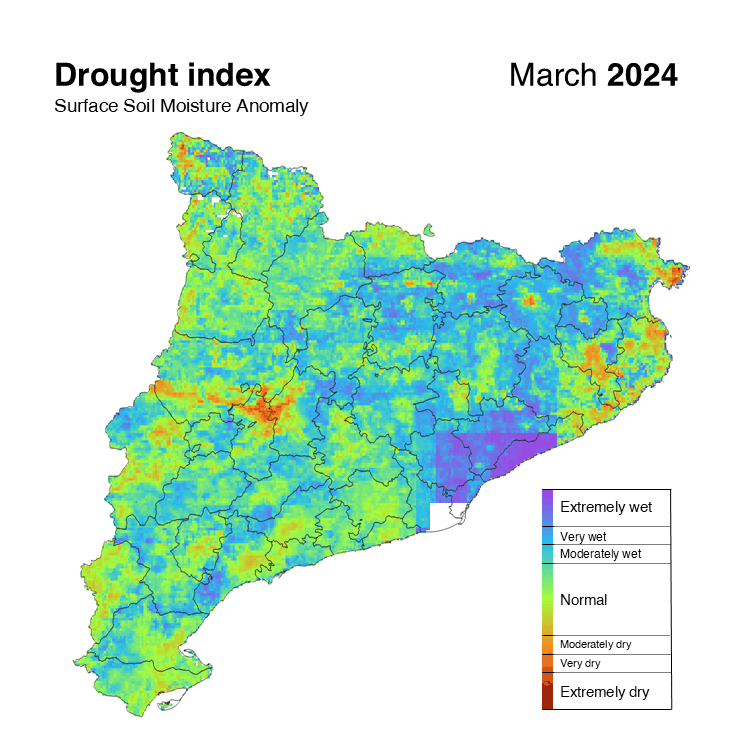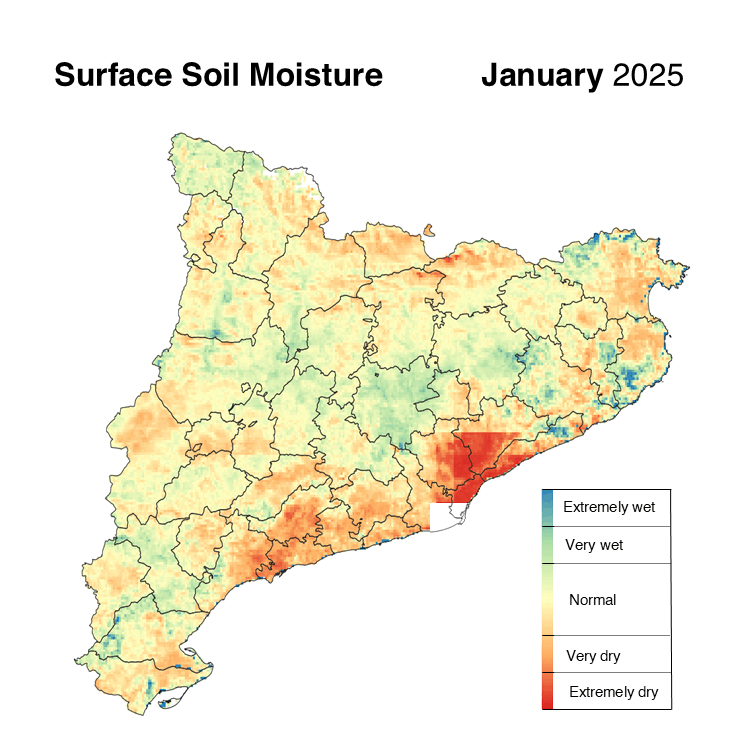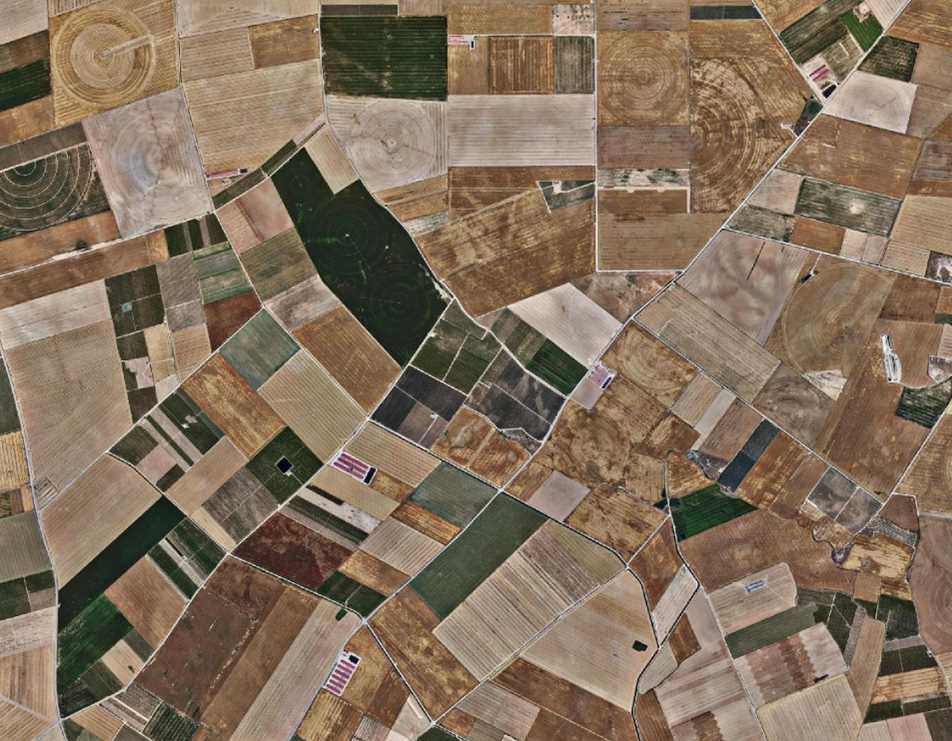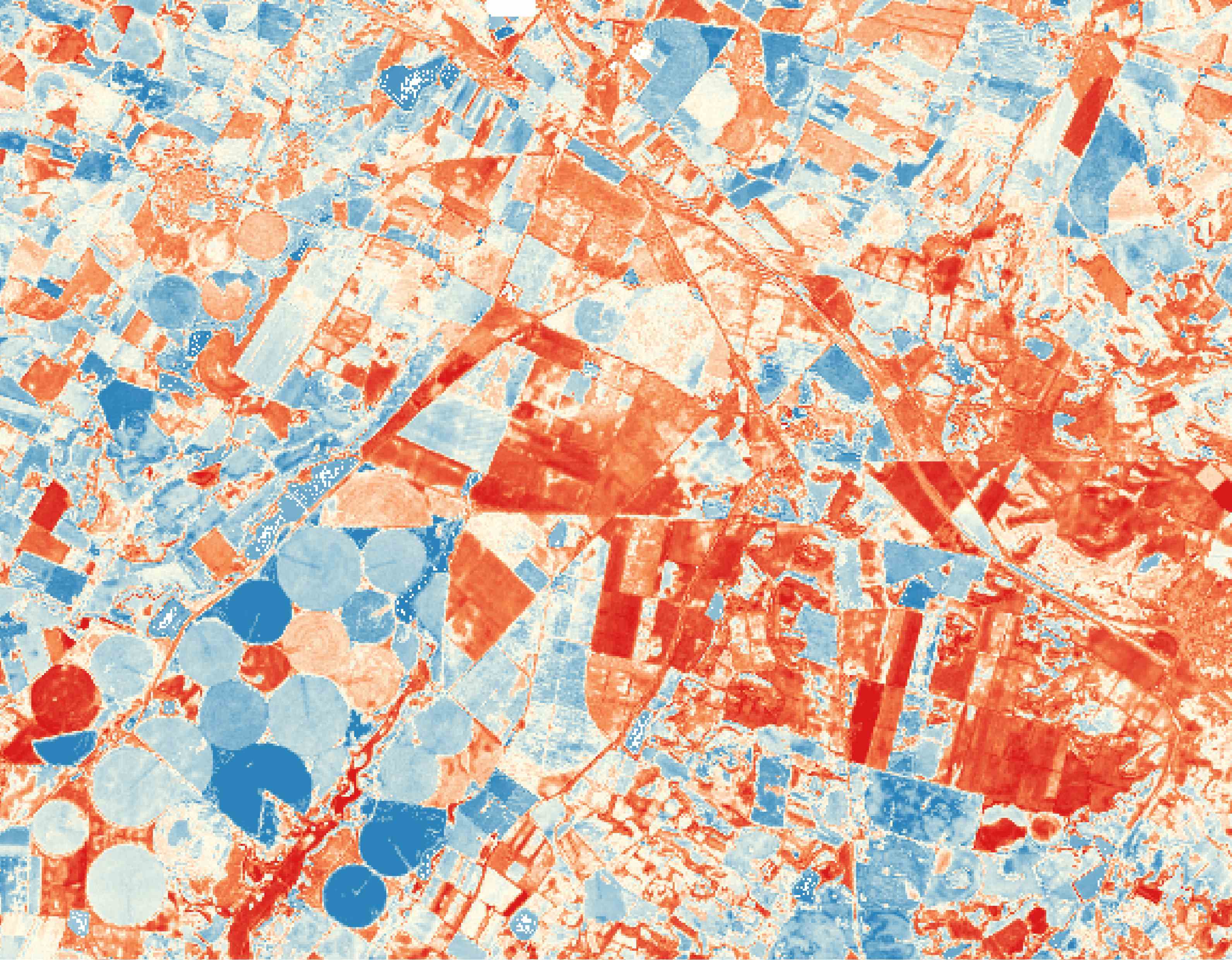 Note: Densely urban areas are masked out
Note: Densely urban areas are masked out
The first three months of 2025 have brought abundant rainfall to the eastern part of the Iberian Peninsula, significantly replenishing water reserves. March 2025 has been the rainiest of the century in Catalonia (with areas accumulating more than 500 mm of rainfall), alleviating the hydrological drought that has affected the region’s river basins.
At the same time, these increased precipitations have helped restore soil moisture levels, a key factor in water availability for agriculture and ecosystems. Remote sensing satellites have captured this change, countering the tendency of the last months
Drought index
Data from NASA’s SMAP and MODIS satellites allows us to track soil moisture at a 1 km resolution on a daily basis.
This data, available since 2015, allows us to produce a monthly average, and offers valuable insights into drought severity and recovery.
Gathering all of these monthly averages we can also tell, for each specific month, how anomalously dry or wet is it, compared to the historical data of this month in the last 10 years. This information offers valuable insights into drought severity and recovery.
Surface Soil Moisture increases during 2025
After a prolonged drought that began in 2022 — and still persists in some areas of the internal Catalan basins —, data from March 2025 indicates a significant increase in soil moisture during the first three months of the year.
 Note: Densely urban areas are masked out
Note: Densely urban areas are masked out
High Resolution Soil Moisture from EO data
isardSAT is an R&D enterprise that works in the design, development, and implementation of algorithms to process satellite data, which will ultimately be able to retrieve key Earth parameters and climate variables estimates.
Our soil moisture remote sensing algorithms are also applied to a world-wide drought monitoring service operated by Lobelia Earth, an SME specialised in high resolution climate risks assessment and quantification.

